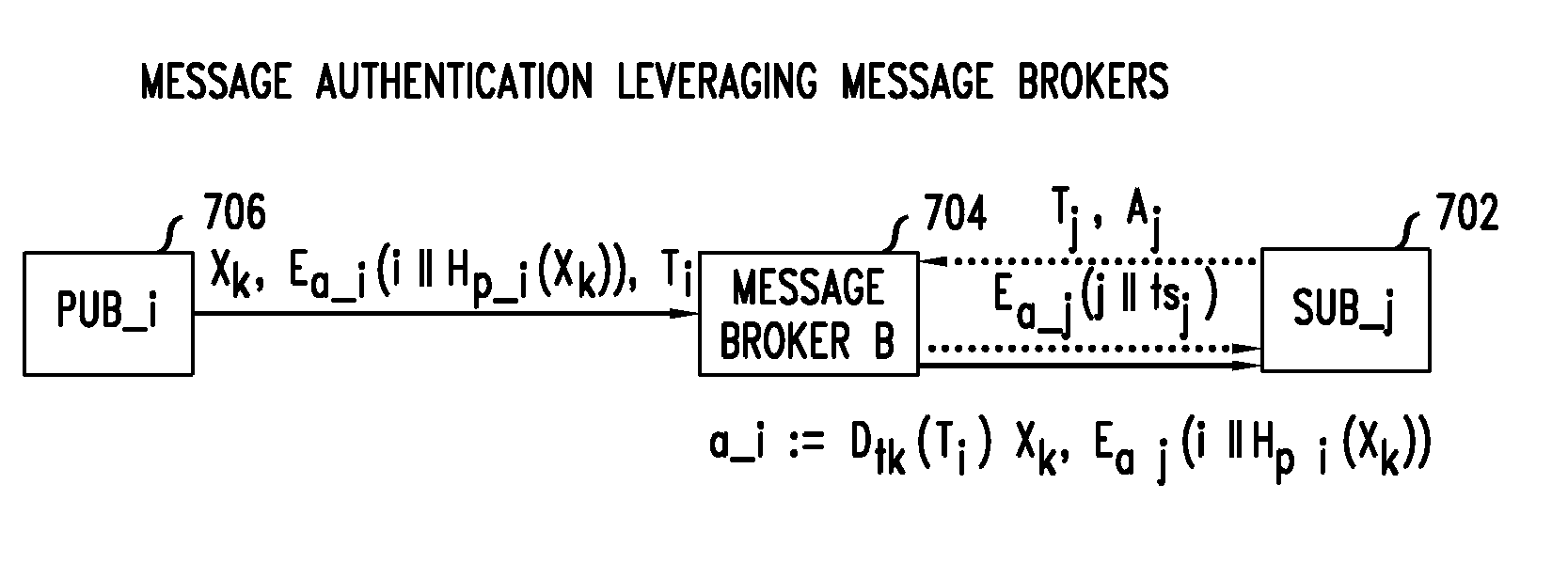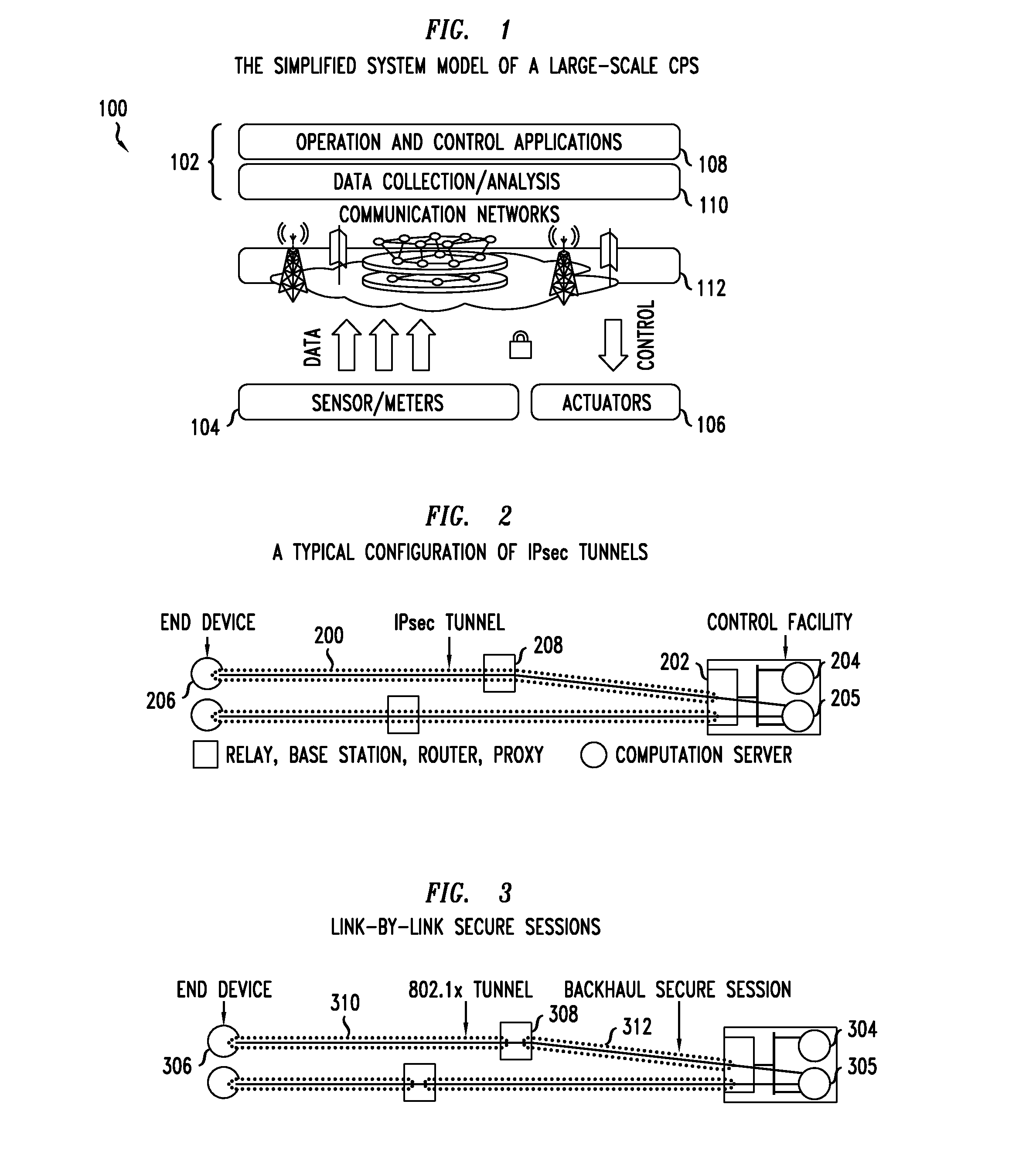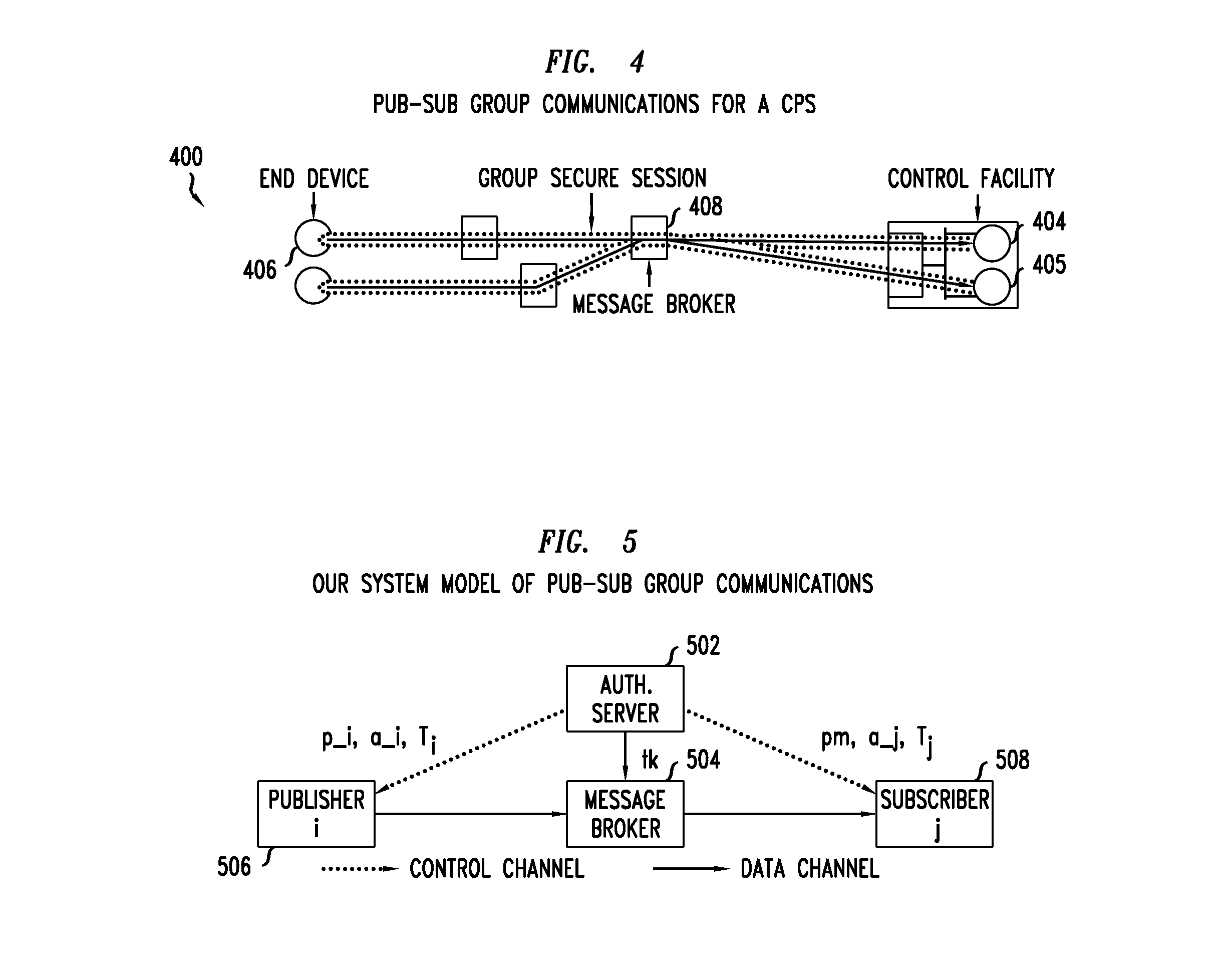Method and apparatus for resilient end-to-end message protection for large-scale cyber-physical system communications
a cyber-physical system and message protection technology, applied in the field of machine-to-machine communication systems, can solve the problems of high overhead of secure group communication, high overhead of group communication, and difficulty in implementing these protocols on end devices with constrained computing power or bandwidth, so as to improve privacy, message authentication, and key exposure.
- Summary
- Abstract
- Description
- Claims
- Application Information
AI Technical Summary
Benefits of technology
Problems solved by technology
Method used
Image
Examples
Embodiment Construction
[0017]Today many countries, cities, and utilities are deploying nationwide or statewide critical infrastructures that incorporate Cyber-Physical Systems (CPS). Examples of such critical cyber-physical infrastructures are national disaster control systems, transportation networks, gas and water networks, and power grids. Using cyber-physical systems is expected to significantly improve safety, reliability, and efficiency in operating critical infrastructures. Aligned with this increasing deployment of CPS, US government research agencies have identified CPS as a key area of research since late 2006. By definition a full-fledged CPS integrates computing and communication capabilities with the monitoring and control of physical entities in real world. The CPS for the critical infrastructures (hereafter called large scale CPS) must be secure, reliable, and operated in real-time,1 otherwise it can present serious economic and safety hazards.
[0018]Referring to FIG. 1, there is shown a sim...
PUM
 Login to View More
Login to View More Abstract
Description
Claims
Application Information
 Login to View More
Login to View More - R&D
- Intellectual Property
- Life Sciences
- Materials
- Tech Scout
- Unparalleled Data Quality
- Higher Quality Content
- 60% Fewer Hallucinations
Browse by: Latest US Patents, China's latest patents, Technical Efficacy Thesaurus, Application Domain, Technology Topic, Popular Technical Reports.
© 2025 PatSnap. All rights reserved.Legal|Privacy policy|Modern Slavery Act Transparency Statement|Sitemap|About US| Contact US: help@patsnap.com



